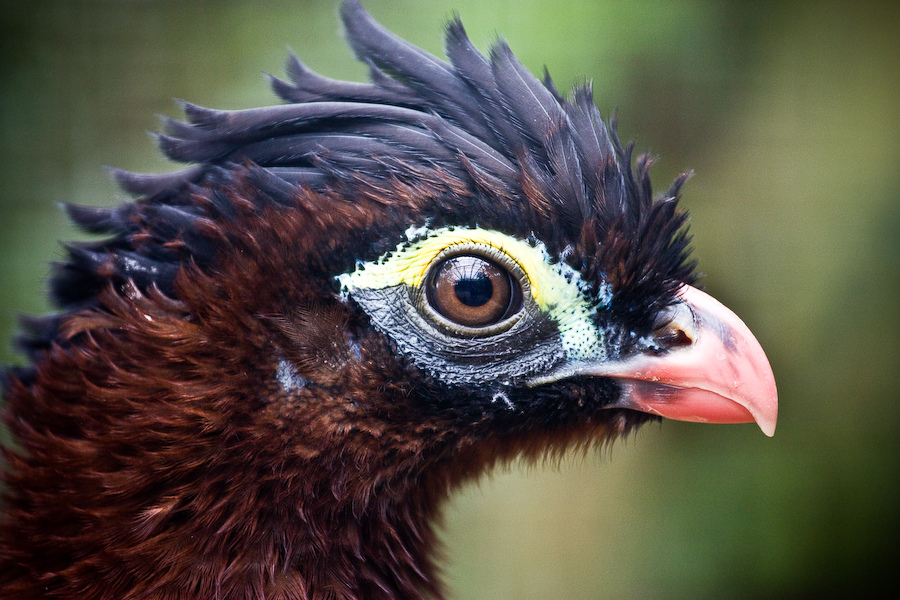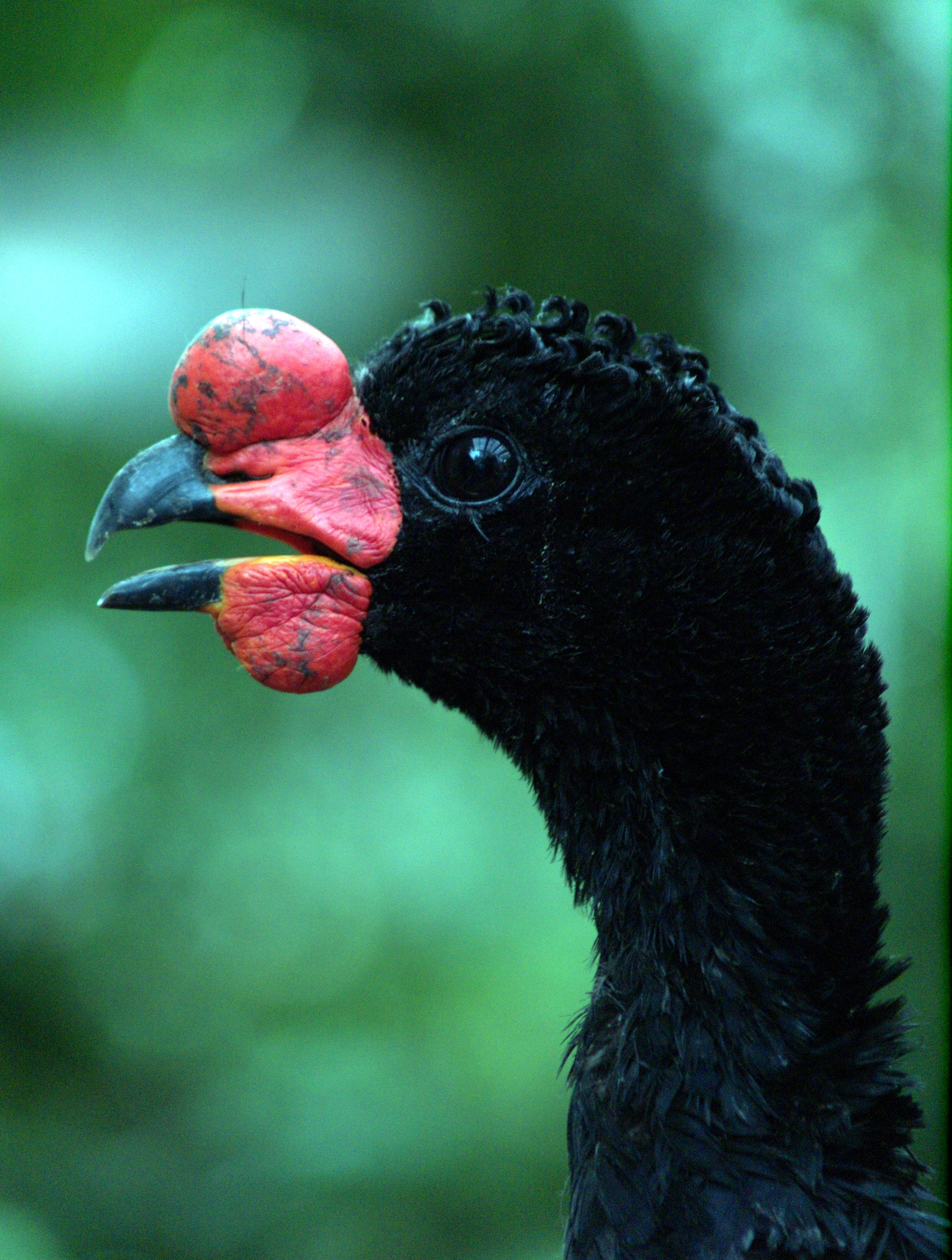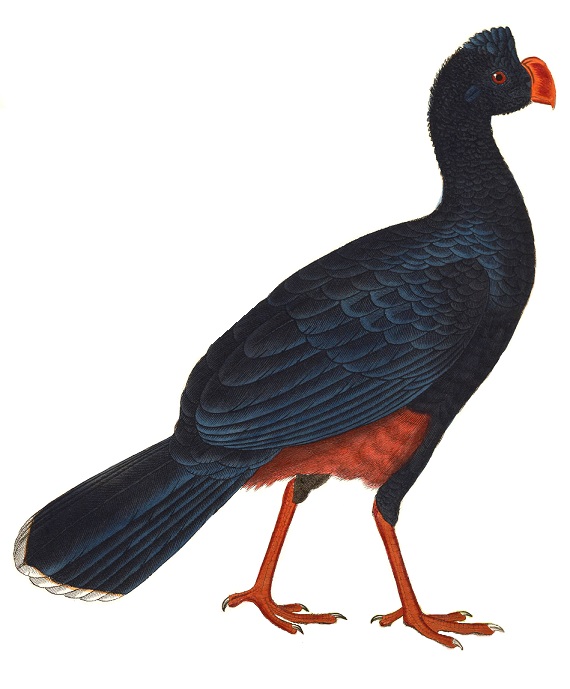|
Curassow
Curassows are one of the three major groups of cracid birds. They comprise the largest-bodied species of the cracid family. Three of the four genera are restricted to tropical South America; a single species of ''Crax'' ranges north to Mexico. They form a distinct clade which is usually classified as the subfamily Cracinae. Evolution In line with the other 3 main lineages of cracids ( chachalacas, true guans, and the horned guan), mt and nDNA sequence data indicates that the curassows diverged from their closest living relatives (probably the guans) at some time during the Oligocene, or c.35–20 mya (Pereira ''et al.'' 2002). This data must be considered preliminary until corroborated by material (e.g. fossil) evidence however. What appears certain from analysis of the molecular data, calibrated against geological events that would have induced speciation, is that there are 2 major lineages of curassows: one containing only ''Crax'', and another made up of ''Mitu'' and ' ... [...More Info...] [...Related Items...] OR: [Wikipedia] [Google] [Baidu] |
Wattled Curassow
The wattled curassow (''Crax globulosa'') is a threatened member of the family (biology), family Cracidae, the curassows, guan (bird), guans, and chachalacas. It is found in remote rainforests in the western Amazon basin in South America. Males have black plumage, except for a white crissum (the area around the cloaca), with curly feathers on the head and red beak, bill ornaments and wattles. Females and juveniles are similar but lack the bill ornamentation and have a reddish-buff crissum area. The wattled curassow is the most ancient lineage of the southern ''Crax'' curassows. In captivity, it sometimes hybridises with the blue-billed curassow. The habitat of the wattled curassow is gallery forests and seasonally-flooded forests where it feeds in small groups on the ground. The diet is largely fruit, but invertebrates and some small vertebrates are opportunistically taken. Little is known of its breeding habits, but it is known that the bird nest, nest is built of sticks and leav ... [...More Info...] [...Related Items...] OR: [Wikipedia] [Google] [Baidu] |
Cracidae
The chachalacas, guans, and curassows are birds in the Family (biology), family Cracidae. These are species of tropical and subtropical Central America, Central and South America. The range of one species, the plain chachalaca, just reaches southernmost parts of Texas in the United States. Two species, the Trinidad piping guan and the rufous-vented chachalaca occur on the islands of Trinidad and Tobago respectively. Systematics and evolution The family Cracidae was introduced (as Craxia) by the French polymath Constantine Samuel Rafinesque in 1815. The Cracidae are an ancient group that were thought to be related to the Australasian Megapode, mound-builders of family Megapodiidae. The two families they were sometimes united in a distinct order (biology), order, Craciformes, as in Munroe and Sibley's 1993 ''World Checklist of Birds''. However, the group is not monophyletic and more recent phylogenetic studies have found Megapodiidae and Cracidae to be successive Basal (phylogenetic ... [...More Info...] [...Related Items...] OR: [Wikipedia] [Google] [Baidu] |
Great Curassow
The great curassow (''Crax rubra'') is a large, pheasant-like bird from the Neotropical rainforests, its range extending from eastern Mexico, through Central America to western Colombia and northwestern Ecuador. Male birds are black with curly crests and yellow beaks; females come in three colour morphs, barred, rufous and black. These birds form small groups, foraging mainly on the ground for fruits and arthropods, and the occasional small vertebrate, but they roost and nest in trees. This species is monogamous, the male usually building the rather small nest of leaves in which two eggs are laid. This species is threatened by loss of habitat and hunting, and the International Union for Conservation of Nature has rated its conservation status as " vulnerable". Taxonomy The great curassow is the most northerly ''Crax'' species. It is part of a clade that inhabited the north of South America since about 9 mya (Tortonian, Late Miocene). As the Colombian Andes were uplifted around ... [...More Info...] [...Related Items...] OR: [Wikipedia] [Google] [Baidu] |
Blue-billed Curassow
The blue-billed curassow (''Crax alberti'') is a species of bird in the family Cracidae, the chachalacas, guans, and curassows. It is endemic to Colombia. Taxonomy and systematics The blue-billed curassow is monotypic. However, it formerly included what is now the yellow-knobbed curassow (''Crax daubentoni'') as a subspecies. The holotype of putative species ''C. annulata'' has been determined to be a female blue-billed curassow.Remsen, J. V., Jr., J. I. Areta, E. Bonaccorso, S. Claramunt, A. Jaramillo, D. F. Lane, J. F. Pacheco, M. B. Robbins, F. G. Stiles, and K. J. Zimmer. Version 24 August 2021. A classification of the bird species of South America. American Ornithological Society. https://www.museum.lsu.edu/~Remsen/SACCBaseline.htm retrieved August 24, 2021del Hoyo, J. and G. M. Kirwan (2020). Blue-billed Curassow (''Crax alberti''), version 1.0. In Birds of the World (J. del Hoyo, A. Elliott, J. Sargatal, D. A. Christie, and E. de Juana, Editors). Cornell Lab of O ... [...More Info...] [...Related Items...] OR: [Wikipedia] [Google] [Baidu] |
Alagoas Curassow
The Alagoas curassow (''Mitu mitu'') is a glossy-black, pheasant-like bird. It was formerly found in forests in Northeastern Brazil in what is now the states of Pernambuco and Alagoas, which is the origin of its common name. It is now extinct in the wild; there are about 130 individuals in captivity. German naturalist Georg Marcgrave first identified the Alagoas curassow in 1648 in its native range. Subsequently, the origin and legitimacy of the bird began to be questioned due to the lack of specimens. An adult female curassow was rediscovered in 1951, in the coastal forests of Alagoas. The ''Mitu mitu'' was then accepted as a separate species. At that time fewer than 60 birds were left in the wild, in the forests around São Miguel dos Campos. Several authors in the 1970s brought to light the growing destruction of its habitat and the rarity of the species. Even with these concerns, the last large forest remnants which contained native ''Mitu mitu'' were demolished for sugarcane ... [...More Info...] [...Related Items...] OR: [Wikipedia] [Google] [Baidu] |
Crax
''Crax'' is a genus of curassows in the order Galliformes, a clade of large, heavy-bodied, ground-feeding birds. They are known from tropical South America with one species, the great curassow, ranging northwards through Central America as far as Mexico. The curassows in this genus are noted for their sexual dimorphism; males are more boldly coloured than females and have facial ornamentation such as knobs and wattles. They are also characterised by curly crests and contrastingly-coloured crissa (the area around the cloaca). ''Crax'' curassows probably originated as a distinct lineage during the Late Miocene. During the Messinian, the ancestral Crax split into two lineages separated by the Colombian Andes and the Cordillera de Mérida which uplifted at that time. The northern lineage radiated into the great, blue-billed, and yellow-knobbed curassows, while the four southern species evolved as they became separated by the uplifting of various mountain ranges. Characteristics The v ... [...More Info...] [...Related Items...] OR: [Wikipedia] [Google] [Baidu] |
Helmeted Curassow
The helmeted curassow (''Pauxi pauxi'') or northern helmeted curassow, is a large terrestrial bird in the family Cracidae found in the subtropical cloud-forest in steep, mountainous regions of western Venezuela and northern Colombia. There are two subspecies found in different mountain ranges. It is a mostly black bird with a white tip to its tail, a red bill and a distinctive grey casque on its forehead. The population of this bird is in decline and the International Union for Conservation of Nature has rated its conservation status as "Endangered species, endangered". Description It is a large terrestrial black curassow with a small head, large bluish grey Casque (anatomy), casque on forehead, red Beak, bill, white-tipped tail feathers, greenish glossed mantle and breast feathers, and white below. Both sexes are similar. Length in adult birds can vary from . The male, at 3.6 kg (8 lbs), is larger than the female, at 2.6 kg (5.8 lbs). Among standard measurem ... [...More Info...] [...Related Items...] OR: [Wikipedia] [Google] [Baidu] |
Bare-faced Curassow
The bare-faced curassow (''Crax fasciolata'') is a species of bird in the family Cracidae, the chachalacas, guans, curassows, etc. It is found in Brazil, Paraguay, and eastern Bolivia, and extreme northeast Argentina, in the cerrado, pantanal, and the southeastern region of the Amazon basin. Its natural habitats are subtropical or tropical dry forest and subtropical or tropical moist lowland forest. Taxonomy There are three currently recognized subspecies following the IOC, * ''C. f. fasciolata'' (Spix, 1825) – fasciated curassow – lowlands of Brazil to Paraguay and northeast Argentina * ''C. f. grayi'' ( Ogilvie-Grant, 1893) – eastern Bolivia * '' C. f. pinima'' ( Pelzeln, 1870) – northeastern Brazil Description The bare-faced curassow is a large bird reaching a length of . The sexes differ in appearance. The male has black upper parts faintly glossed with greenish-olive, with an unfeathered face with yellowish bare skin, a small black crest, and white underparts. The ... [...More Info...] [...Related Items...] OR: [Wikipedia] [Google] [Baidu] |
Black Curassow
The black curassow (''Crax alector''), also known as the smooth-billed curassow and the crested curassow, is a species of bird in the family Cracidae, the chachalacas, guans, and curassows. It is found in humid forests in northern South America in Colombia, Venezuela, the Guianas including Suriname, and far northern Brazil, and is introduced to Bahamas, Cuba, Jamaica, Haiti, Dominican Republic, Puerto Rico and Lesser Antilles.Long, John L. (1981). Introduced Birds of the World. Agricultural Protection Board of Western Australia, 21–493 It is the only ''Crax'' curassow where the male and female cannot be separated by plumage, as both are essentially black with a white crissum (the area around the cloaca), and have a yellow (eastern part of its range) or orange-red (western part of its range) cere. Taxonomy There are two recognized subspecies: * ''C. a. alector'' (Linnaeus, 1766) - eastern Colombia and Venezuela south of the Orinoco River * ''C. a. erythrognatha'' ( PL Sclater and ... [...More Info...] [...Related Items...] OR: [Wikipedia] [Google] [Baidu] |
Crestless Curassow
The crestless curassow (''Mitu tomentosum'') is a species of bird in the family Cracidae, the chachalacas, guans, and curassows. It is found in Brazil, Colombia, Guyana, and Venezuela.Remsen, J. V., Jr., J. I. Areta, E. Bonaccorso, S. Claramunt, A. Jaramillo, D. F. Lane, J. F. Pacheco, M. B. Robbins, F. G. Stiles, and K. J. Zimmer. Version 24 August 2021. Species Lists of Birds for South American Countries and Territories. https://www.museum.lsu.edu/~Remsen/SACCCountryLists.htm retrieved August 24, 2021 Taxonomy and systematics The crestless curassow was originally described in genus ''Crax'' but genetic data confirm that ''Mitu'' is a valid genus.Remsen, J. V., Jr., J. I. Areta, E. Bonaccorso, S. Claramunt, A. Jaramillo, D. F. Lane, J. F. Pacheco, M. B. Robbins, F. G. Stiles, and K. J. Zimmer. Version 24 August 2021. A classification of the bird species of South America. American Ornithological Society. https://www.museum.lsu.edu/~Remsen/SACCBaseline.htm retrieved August 24, ... [...More Info...] [...Related Items...] OR: [Wikipedia] [Google] [Baidu] |
Nothocrax
The nocturnal curassow (''Nothocrax urumutum'') is a species of bird in the family Cracidae, the chachalacas, guans, and curassows. It is found in Brazil, Colombia, Ecuador, Peru, and Venezuela.Remsen, J. V., Jr., J. I. Areta, E. Bonaccorso, S. Claramunt, A. Jaramillo, D. F. Lane, J. F. Pacheco, M. B. Robbins, F. G. Stiles, and K. J. Zimmer. Version 24 August 2021. Species Lists of Birds for South American Countries and Territories. https://www.museum.lsu.edu/~Remsen/SACCCountryLists.htm retrieved August 24, 2021 Taxonomy and systematics The nocturnal curassow was originally placed in genus ''Crax'' but genetic data confirm that ''Nothocrax'' is a valid genus.Remsen, J. V., Jr., J. I. Areta, E. Bonaccorso, S. Claramunt, A. Jaramillo, D. F. Lane, J. F. Pacheco, M. B. Robbins, F. G. Stiles, and K. J. Zimmer. Version 24 August 2021. A classification of the bird species of South America. American Ornithological Society. https://www.museum.lsu.edu/~Remsen/SACCBaseline.htm retrieved ... [...More Info...] [...Related Items...] OR: [Wikipedia] [Google] [Baidu] |




